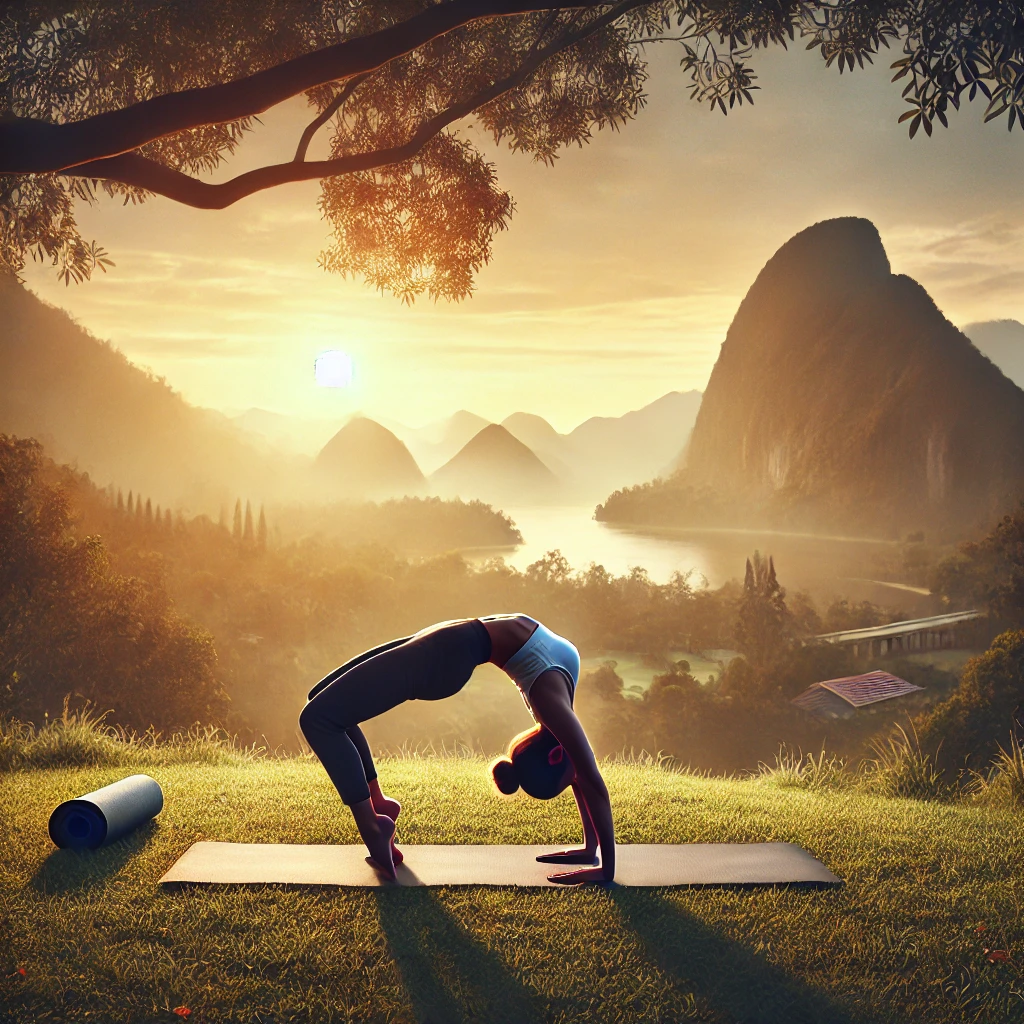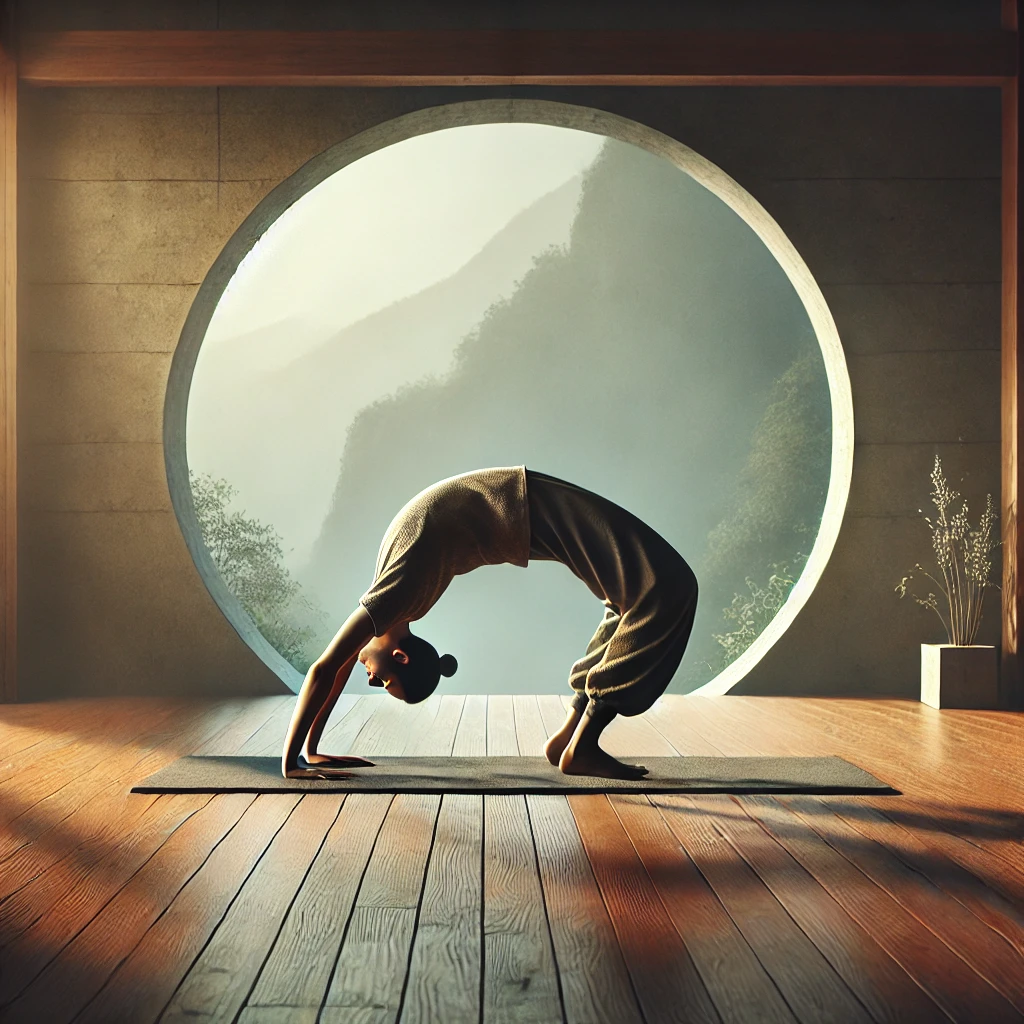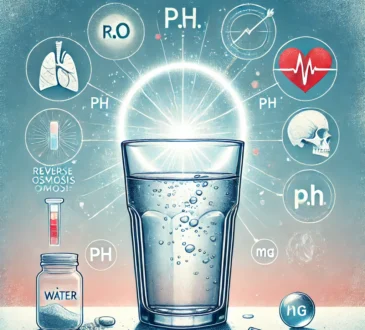Introduction:
Chakrasana, also known as the Wheel Pose or Urdhva Dhanurasana, is a prominent yoga asana that holds a significant place in the ancient practice of yoga. Derived from the Sanskrit words “chakra” meaning wheel and “asana” meaning pose, Chakrasana is not only a physically empowering posture but also an essential technique for enhancing the flow of energy throughout the body. In this article, we will explore the benefits, steps to perform, and the spiritual significance of Chakrasana.
“Discover the Benefits and Steps of Dhanurasana (Bow Pose) in Yoga”
The Symbolism of Chakras:
In yogic philosophy, the human body is believed to have seven main energy centres, known as chakras, which are aligned along the spine. Each chakra corresponds to specific physical, emotional, and spiritual aspects of our being. Chakrasana is thought to activate and balance these energy centres, allowing for a harmonious flow of energy through the body.
Spiritual Significance:
Beyond the physical benefits, Chakrasana is considered a heart-opening pose that can lead to a deeper connection with one’s emotions and spiritual self. It is believed to awaken feelings of compassion, self-love, and universal love, fostering a sense of unity with all living beings.
Physical Benefits of Chakrasana
1. Strengthens the Spine and Increases Flexibility
Chakrasana is a deep backbend that stretches and strengthens the spine. Regular practice enhances spinal flexibility, preventing stiffness and promoting better posture. This pose counteracts the effects of prolonged sitting, making it beneficial for office workers and individuals with sedentary lifestyles.
2. Enhances Core Strength
The Wheel Pose engages the core muscles, including the abdominals and obliques. Holding this pose requires significant core strength, which improves balance, stability, and overall body coordination. A strong core supports the lower back and reduces the risk of injuries.
3. Opens Up the Chest and Lungs
By expanding the chest, Chakrasana allows for better lung capacity and deeper breathing. This increased oxygen intake improves respiratory function, enhances endurance, and boosts energy levels. People suffering from asthma or breathing issues may find relief through regular practice.
4. Strengthens the Arms, Wrists, and Shoulders
Supporting the body’s weight on the arms in this pose builds upper body strength, particularly in the arms, shoulders, and wrists. This makes Chakrasana an excellent pose for athletes, gymnasts, and individuals looking to develop upper body endurance.
5. Stimulates the Nervous System
The backbend stimulates the central nervous system, including the spinal cord and brain. It enhances neural communication, improves reflexes, and sharpens cognitive functions, leading to better memory and concentration.
6. Boosts Circulation and Detoxification
The heart is elevated in Chakrasana, which improves blood circulation. Enhanced circulation helps deliver oxygen and nutrients to various organs, promoting overall health. Additionally, the pose stimulates the lymphatic system, aiding in detoxification and boosting immunity.
7. Improves Digestion
By stretching the abdominal region, Chakrasana stimulates the digestive organs, including the stomach, intestines, and liver. This improves metabolism, aids in digestion, and alleviates issues like constipation and bloating.
8. Enhances Energy Levels
Practicing Chakrasana activates the body’s energy channels, revitalizing the practitioner. The posture awakens the dormant energy stored in the spine, increasing vitality and reducing fatigue.
Mental and Emotional Benefits of Chakrasana
9. Reduces Stress and Anxiety
Backbends like Chakrasana help release stored emotional tension, reducing stress and anxiety. The pose opens the heart center, fostering feelings of relaxation and emotional well-being. It also encourages deep breathing, which calms the nervous system.
10. Elevates Mood and Fights Depression
Chakrasana stimulates the adrenal glands, leading to the release of endorphins and dopamine—hormones associated with happiness. This makes it an effective natural remedy for depression and mood swings.
11. Improves Mental Clarity and Focus
By increasing blood flow to the brain, Chakrasana enhances cognitive functions such as memory, focus, and concentration. Regular practice can help improve productivity and decision-making abilities.
12. Boosts Confidence and Courage
Practicing challenging poses like Chakrasana fosters self-confidence and a sense of accomplishment. Overcoming the initial difficulty of this pose instills mental resilience and courage, encouraging practitioners to face challenges in other areas of life.
13. Encourages Emotional Release
The heart-opening nature of Chakrasana can help release suppressed emotions. Many practitioners experience a sense of emotional relief, leading to inner healing and self-awareness.
Spiritual Benefits of Chakrasana
14. Activates the Heart Chakra (Anahata Chakra)
Chakrasana is strongly associated with the Heart Chakra, the center of love, compassion, and emotional balance. Regular practice of this pose helps open and balance this chakra, fostering deeper connections with oneself and others.
15. Awakens Kundalini Energy
In yogic traditions, Chakrasana is believed to awaken the dormant Kundalini energy located at the base of the spine. This energy moves upward through the chakras, leading to spiritual enlightenment and heightened consciousness.
16. Enhances Prana Flow
Chakrasana increases the flow of prana (life force energy) throughout the body, promoting vitality and spiritual awareness. This makes it an essential asana in many advanced yoga practices and meditation routines.
17. Promotes a Sense of Oneness
By aligning the body, mind, and spirit, Chakrasana fosters a sense of unity and inner peace. Many practitioners experience a deep connection with the universe, enhancing their spiritual journey.
As with any yoga practice, it is essential to approach Chakrasana with caution and under the guidance of a knowledgeable yoga instructor, especially for beginners or those with specific health concerns. Consistent and mindful practice of Chakrasana can lead to a multitude of physical, mental, and spiritual benefits, contributing to an overall healthier and more balanced lifestyle.
Performing Chakrasana:
Step-by-step guide:
- Starting Position: Begin by lying flat on your back (supine) on a yoga mat. Bend your knees and place your feet on the floor, hip-width apart and close to your buttocks. Your feet should be parallel to each other, and the heels should be in line with the sit bones.
- Hand Placement: Bend your elbows and place your palms on the floor beside your shoulders, fingers pointing toward your shoulders. Your fingertips should be pointing towards your feet.
- Positioning the Feet and Hands: Ensure that your feet are parallel and hip-width apart. The hands should be placed slightly wider than shoulder-width apart, with the fingers spread wide and pointing toward your shoulders.
- Lifting into the Pose: Inhale deeply, press into your palms and feet and begin lifting your hips and shoulders off the floor. Allow your head to hang gently or support it with your neck muscles. Keep your elbows parallel and avoid splaying them outward.
- Straightening the Arms and Legs: As you lift your body higher, straighten your arms and legs as much as you comfortably can. Keep pushing into your palms to maintain the lift. Make sure your thighs remain parallel to each other.
- Opening the Chest: Arch your back and lift your chest toward the ceiling. This chest opening is an essential aspect of Chakrasana. Keep breathing steadily throughout the pose.
- Gazing Direction: If you feel comfortable, you can gaze toward your hands. Alternatively, for a more intense backbend, you can drop your head back and look toward the floor behind you.
- Hold the Pose: Hold Chakrasana for several breaths, aiming to maintain the posture for at least 20-30 seconds when starting. Gradually increase the duration as you become more comfortable with the pose.
- Releasing the Pose: Exhale slowly and gently lower your body back to the mat, releasing your arms and legs.
Modifications and Props:
- If you find it challenging to straighten your arms fully, you can use yoga blocks placed under your hands for added support.
- For added stability, place a yoga block between your thighs and engage your inner thigh muscles.
- To reduce pressure on the wrists, you can practice the pose on your fingertips, or use a folded towel or yoga mat under your palms.
General Precautions
- Proper Warm-up: A thorough warm-up is essential to prepare the body for Chakrasana. Focus on loosening the spine, shoulders, wrists, and legs through preparatory poses like Bhujangasana (Cobra Pose), Setu Bandhasana (Bridge Pose), and wrist stretches.
- Avoid Overexertion: Do not force yourself into Chakrasana if your body is not ready. Overexertion can cause muscle strain, spinal misalignment, or even severe injuries.
- Breathing Awareness: Proper breathing is crucial during Chakrasana. Inhale deeply before lifting into the pose and exhale slowly to release tension. Holding the breath can create unnecessary pressure on the body.
- Use a Proper Surface: Always practice on a non-slip yoga mat or a cushioned surface to prevent slipping and falling.
- Mindful Exit from the Pose: Exiting Chakrasana should be done carefully to avoid spinal shock. Lower your body gently, vertebra by vertebra, while exhaling.
Specific Precautions
1. Spinal Health
- Avoid if You Have Back Issues: People with herniated discs, chronic lower back pain, or spinal injuries should avoid this pose unless approved by a professional.
- Maintain Core Engagement: Engage the core muscles to support the spine and prevent excessive pressure on the lower back.
- Progress Gradually: Increase backbend intensity over time to prevent overstretching or injuries.
2. Shoulder and Wrist Precautions
- Strengthen the Upper Body: Weak shoulders or wrists can make it difficult to maintain balance in Chakrasana. Incorporate exercises like planks and push-ups for strength.
- Check for Shoulder Injuries: People with a history of shoulder dislocation or rotator cuff issues should avoid or modify the pose.
- Proper Hand Placement: Keep the hands shoulder-width apart and fingers spread wide to distribute weight evenly.
3. Neck Protection
- Avoid Neck Compression: Never strain the neck while in Chakrasana. The gaze should remain upward, and the neck should be relaxed.
- Use a Prop if Needed: Beginners can place a yoga block under their head to reduce strain.
4. Leg and Knee Precautions
- Strong and Stable Legs: Weak legs can result in improper weight distribution, leading to knee strain.
- Keep Knees in Alignment: Avoid splaying the knees outward, as this can put stress on the joints.
- Check for Knee Issues: If you have a history of knee injuries, modify the pose by placing support under the feet.
5. Blood Pressure and Heart Conditions
- Not for Hypertension Patients: Chakrasana can spike blood pressure, making it unsuitable for individuals with hypertension.
- Avoid if You Have Heart Problems: The intense stretch and backbend exert pressure on the heart and circulation, potentially aggravating heart conditions.
6. Pregnancy and Postpartum Precautions
- Avoid During Pregnancy: Due to the deep backbend, Chakrasana should not be practiced during pregnancy as it can strain the abdomen.
- Postpartum Considerations: Women recovering from childbirth should consult a doctor before attempting backbends.
7. Age and Experience Level Considerations
- Not for Beginners Without Supervision: Beginners should first develop flexibility and strength through preparatory poses.
- Older Adults Should Be Cautious: People with reduced flexibility or joint concerns should avoid or modify the pose.
Conclusion: Chakrasana is a powerful and invigorating yoga pose that offers numerous physical and emotional benefits. However, it’s crucial to practice with caution and listen to your body’s limitations. With consistent practice and proper alignment, Chakrasana can become a transformative addition to your yoga practice, promoting strength, flexibility, and a deep sense of openness in both body and mind.







